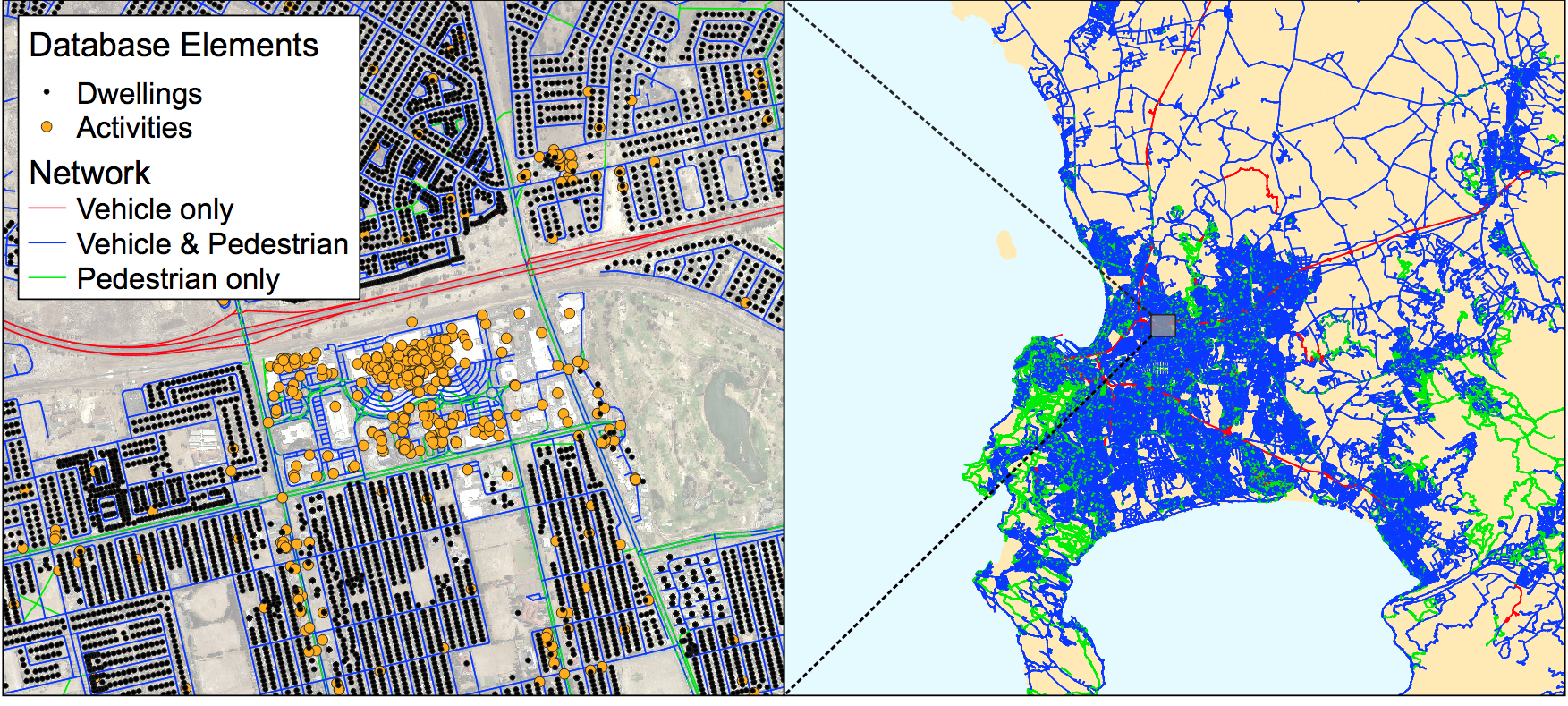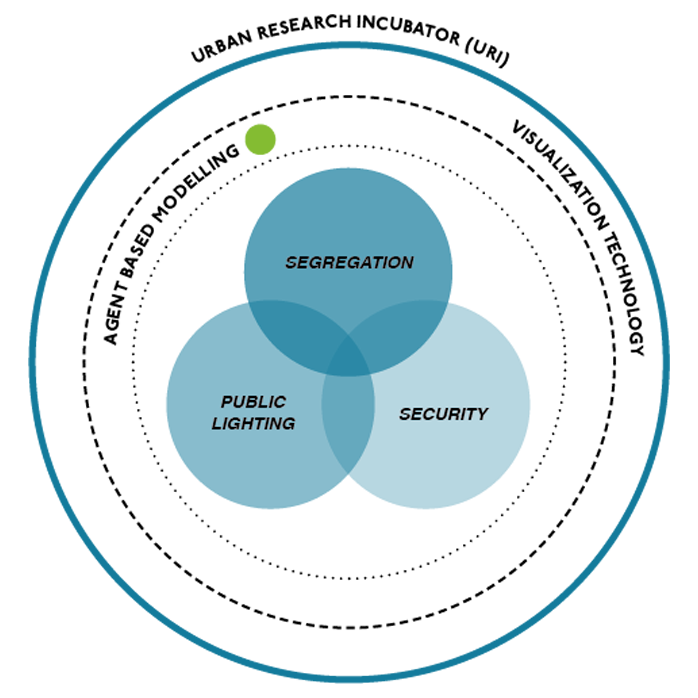Agent-based Modelling of Robbery: Large Scale Simulation as a Tool for Crime Reduction in Cape Town

Background
At the southern tip of Africa lies Cape Town, which is said to encompass several different worlds within one city. One the one hand, it is a well-known tourist destination. On the other hand, it is characterised by extreme inequality, which manifests in high levels of violence and crime. Infrastructure intervention, for example improved public lighting, is a means by which a safer environment can be constructed. However, the budget is limited and knowledge about impact of such interventions is usually deduced from theory and static GIS analysis and governed by strict city by-laws. A dynamic, large-scale agent-based model, which follows a bottom-up approach that captures the relationship between infrastructure and contact crime events, can be a useful tool for better understanding crime dynamics and optimising infrastructure interventions.
Agent-based modelling is a simulation method that can be used to study large and complex systems that contain non-linear characteristics, with a view to providing valuable information about the dynamics of the real-world system.
The team
-

Christiaan Joubert (© 2017 ISTP) -

Sam Lloyd (© 2017 ISTP)
Research Question
Can an agent-based modelling approach yield significant insights into the relationship between urban infrastructure intervention and contact crime (robbery)?
Project Thematic
Policy Relevance
With limited resources, the Cape Town municipal government is tasked with reversing the layout of Apartheid-era spatial planning, with many populated areas located far away from economic hubs, suffering from a lack of jobs and high levels of crime. Use of a comprehensive modelling framework could optimise the impact of urban infrastructure interventions and the policies that govern them.
